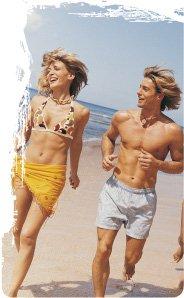Oranges
Eating more vitamin C rich foods may helpto keep wrinkles at bay and benefit age related dryness suggests 2007 research from the American Journal of Clinical Nutrition
Vitamin C’s skin smoothing effects may be due to its ability to mop up free radicals produced from Ultra Violet rays and also in its role in collagen synthesis.
Collagen is a fibrous protein that keeps skin firm and vitamin C is essential for collagen production. Other research suggests that vitamin C may also protect skin cells by promoting the repair of DNA that has been damaged by UV rays,strawberries, red bell peppers ,broccoli and oranges are excellent sources.
Tomatoes
Consuming more lycopene, the caretenoid that ma\kes tomatoes red ,carrots orange and gives pink grapefruit and watermelon a pink red hue may keep your skin smooth and protect it from sunburn. In a study published in 2008in the European Journal of Pharmaceutics and Biopharmaceutics, researchers found that of the 20 individuals studied those who had higher concentrationof lycopene had smoother skin. In another study participants who where exposed to UV light had almost 50 per cent less skin reddening after they ate 2 ½ tablespoons of tomato paste or drank 1 2/3 cups carrot juice daily in addition to there regular diet for 10 to 12 weeks. Supplements however werem’t as effective. Lycopene isn’t the only caretenoid that shields the skin from UVdamage others including lutein found in corn, kale and egg yolks and beta carotene found in pumpkin sweet potato , spinach and carrots also appear to have a protective effect.
Edamame
Soyfoods including edamame,tofu and soymilk may help to preserve skin firming collagen because they are rich in isoflavones. In a study published in the journal of the American College of Nutrition researchers believe that isoflavones help prevent collagen breakdown like lycopene and vitamin C. Isoflavones also act like antioxidants, scavenging for and mopping up free radicals caused by sun exposure.
Salmon
The omega 3 fatty acids DHA and EPA found in fatty fish (tuna,sardines,trout and salmon) may shield cell walls from free radical damage caused by UV rays according to 2009 study. In the American Journal of Clinical Nutrition Omega 3’s also help to prevent skin cancer by reducing inflammatory compounds that can promote tumour growth, says Homer S Black Ph.D, professor emeritus in the Department of Dermatology at Baylor College of Medicine in Houston. Those same fish may help to keep your skin looking youthful too as EPA has been shown to preserve collagen. Aim to eat two servings of fatty fish each week:not only are the omega 3’s good for your skin, they are good for your heart too.
Nothing beats sunscreen and I never go out with a sunfactor lower than 30
MORE BEACH BODY RULES COMING SOON.
 FIT BEACH BOD RULES FOR FAST RESULTS
FIT BEACH BOD RULES FOR FAST RESULTS
I want to have a flat stomach..
OK, we want the six pack but focusing on one problem area can backfire and lead to neglecting other muscle groups. Doing excessive amounts of stomach exercises isn’t the answer, yes we want to include some for core strength and toning but don’t forget thatworking on the chest, back,shoulders and bum can take the focus off the middle and create a more balanced body shape
I’m doing the fatburner program and not losing any fat..
Coasting on your cardio is not going to do you any favours Sticking with the same aerobic workout can sabotage your results as much as pushing too hard. To truly boost your fitness (which enables you to burn more calories with less effort), you need to come out your comfort zone a couple of times a week, to the point where you’re somewhat winded and can feel your heart pounding. Instead of zoning out or doing moderate-intensity cardio all the time, mix in some high-intensity intervals twice a week. For instance, after warming up for 10 minutes on the treadmill, increase the speed or incline for 30 seconds to 1 minute, then recover with 1-3 minutes of easy-to-moderate exercise. Keep alternating for 10-20 minutes, then cool down. You also may want to do longer high-intensity intervals–say, 5 minutes–where you don’t push quite as hard as you do on the shorter ones.
I do lots of light weights…
If you lift weights that are too light, you won’t see improvements in strength, tone or bone density. If you lift weights that are too heavy, you’ll compromise proper form, increasing your injury risk. You’ll also be forced to recruit additional muscles, for instance, using your entire body to complete a biceps curl, thus cheating the targeted muscles of a good workout.
For the most significant strength building, perform 4-6 repetitions per set; for more moderate strength building, perform 8-12 repetitions per set, choosing weights heavy enough that you struggle through your final few reps, but not so heavy that your technique falls apart. If you get to your final rep and feel that you could perform another one, increase the weight by 5-10 percent. You may find that when you’ve considerably increased the amount of weight you’re using, you’ll drop to fewer reps, which is fine, as long as your targeted muscles are fatigued by the final rep. Don’t worry: Lifting to fatigue will not leave you with huge muscles.
I always burn 300 kcals per workout
Instead of worrying over how many calories you burn or steps you climb, focus on the energy and the strength you feel and how wonderfully you’re treating your body. While monitoring your intensity and applying the numbers to ensure you’re mixing things up enough is critical for optimum progress, you should simply be aware, not fixating.
I always put 100 per cent effort in every day i don’t seem to be making progress…
If you don’t rest enough between hard cardio or strength workouts, you’ll stop making progress and may even lose some of the fitness you’ve gained. You’re also likely to burn out on exercise.
To keep your muscles fresh and your motivation high, alternate shorter, tougher cardio workouts (for instance, 20 minutes) with longer, easier days (40-60 minutes). Don’t go all-out more than twice a week. Keep in mind that the more intensely you train, the more time your body needs to recover. It’s a good idea to do a couple of tough workouts and take 1 day completely off each week. On the strength-training front, take at least 1 day off between sessions that work the same muscle group.
I follow a program that a trainer gave me 3 months ago.
If you do the same routine over and over, your muscles will simply adapt; you’re likely to hit a plateau because each exercise stimulates only a limited number of muscle fibers. However, if you challenge your muscles from a variety of angles by adding or alternating moves periodically, you’ll get significantly more fibers into the act and develop more tone and strength.
For each muscle group, learn an additional 2 or 3 exercises, trying new angles and equipment. (If you can’t get instruction from a trainer, there are plenty of books and videos organized by routine for each body part.) For instance, if you usually do the dumbbell chest press on a flat bench, try it at an incline. If you normally use the chest-press machine, try the dumbbell chest press or the bench press with a barbell. Expand your repertoire enough so that you can change your entire routine every 6-8 weeks.
More Fast Beach Bod Rules coming Next week

